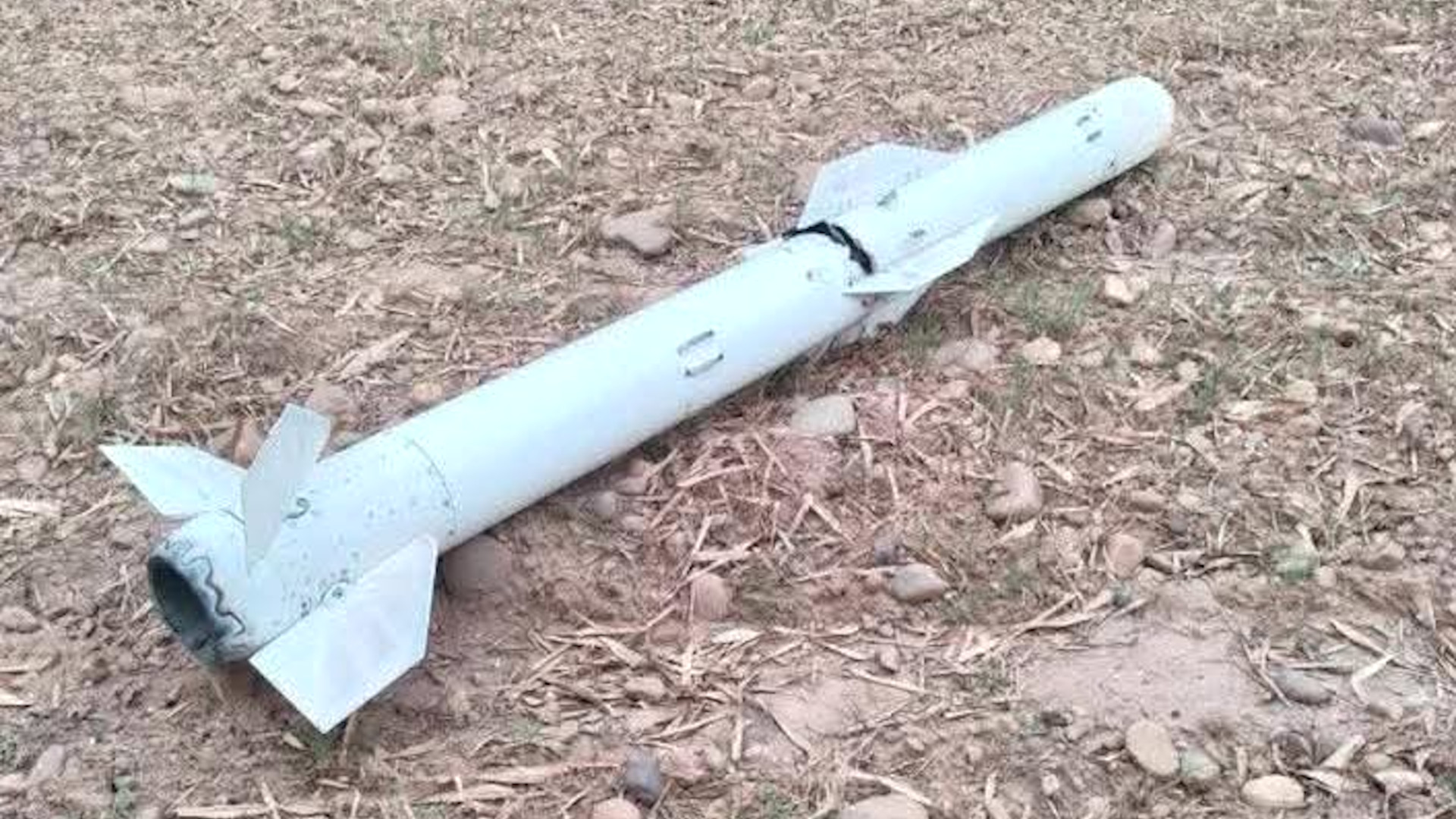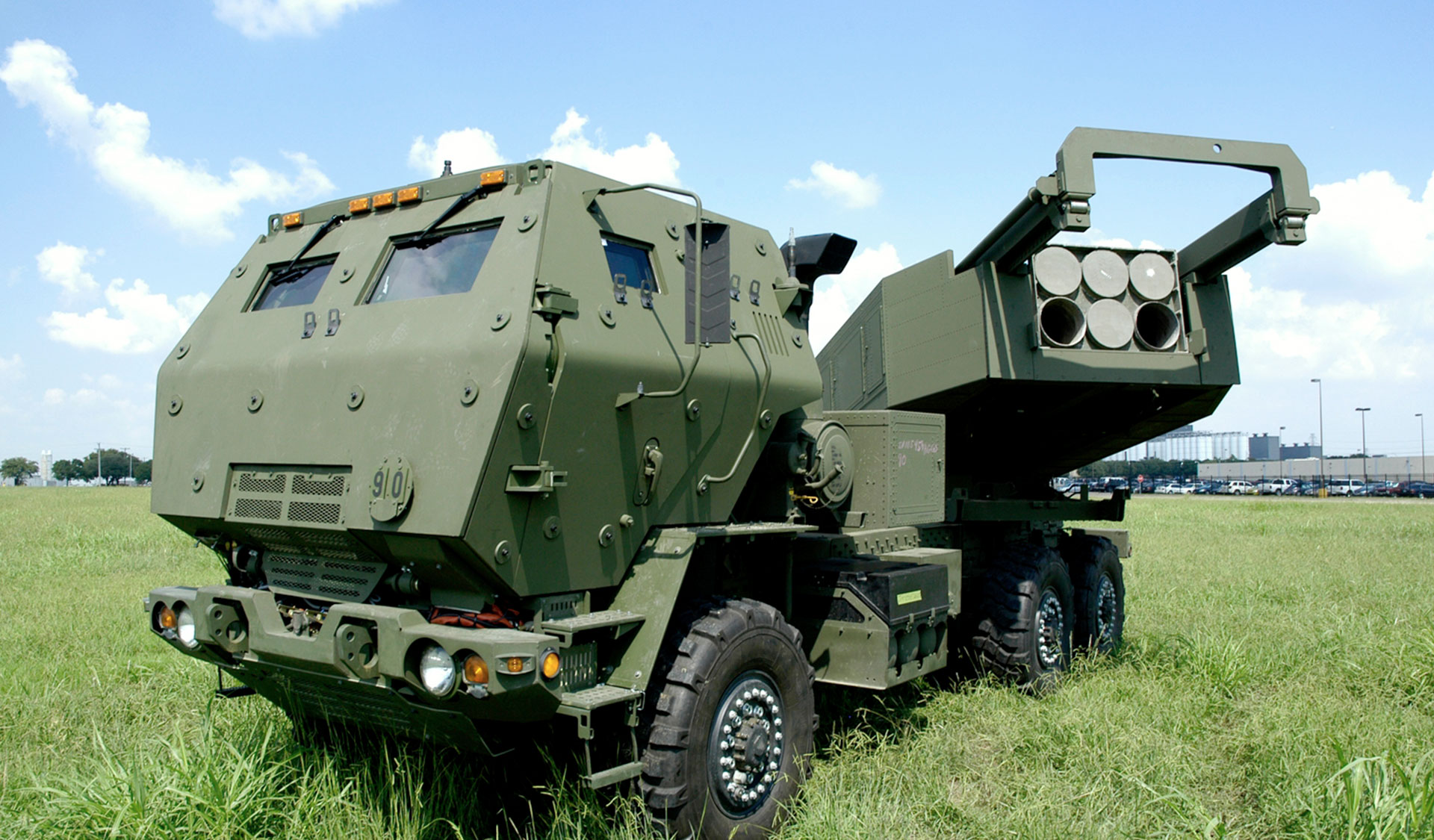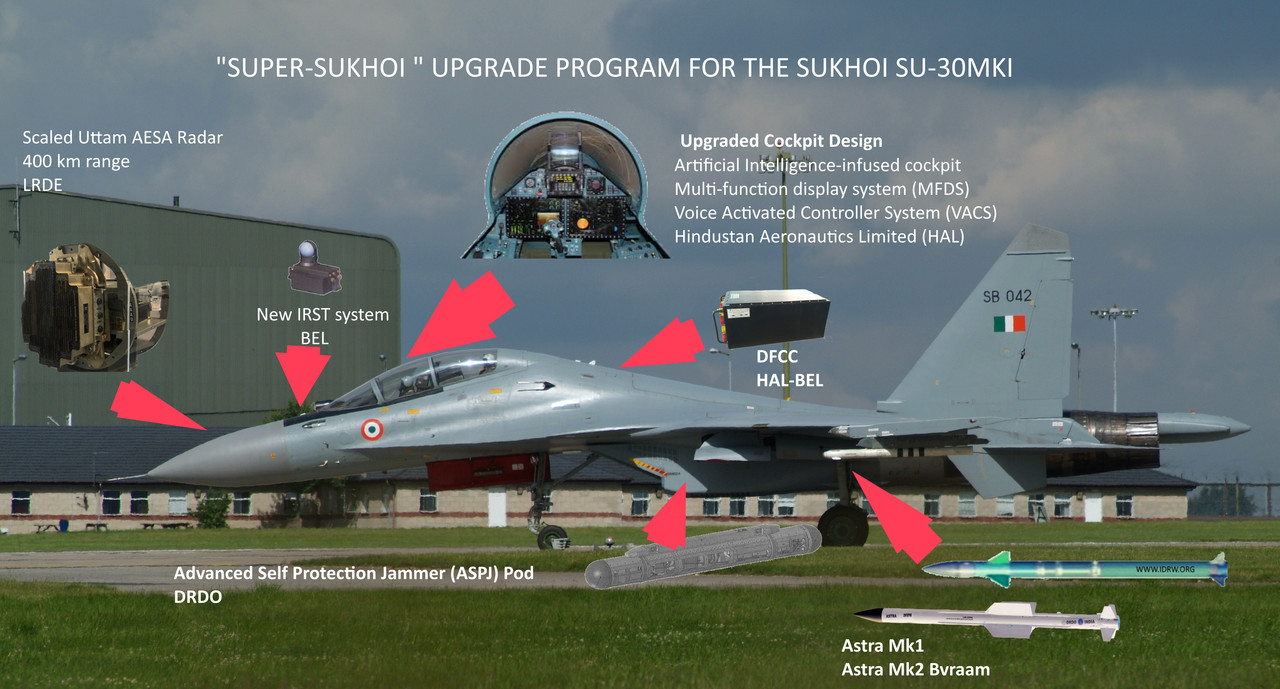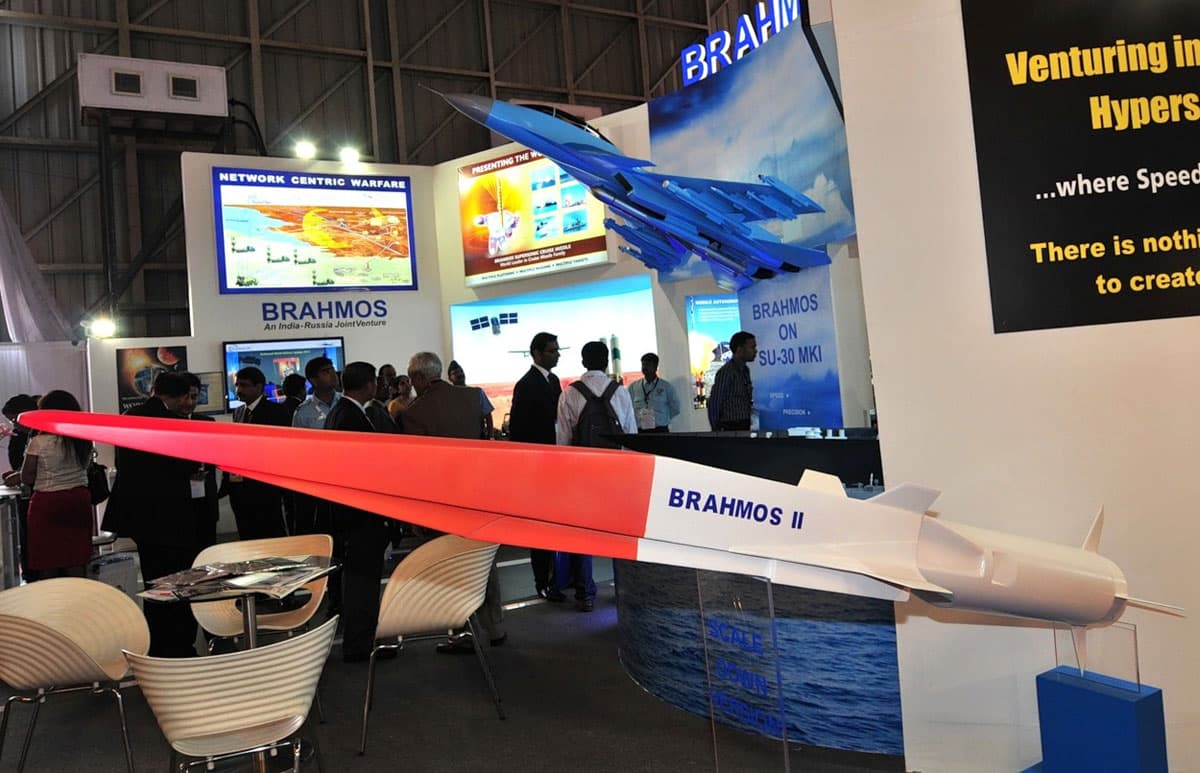SOURCE: AFI

In an intriguing and unexpected development, the Russian 2S7M Malka, a Soviet-era self-propelled 203 mm cannon renowned as one of the world’s largest mobile artillery systems, has reportedly been spotted with a Sanskrit inscription on its barrel. The inscription, identified as the powerful Narasimha Mantra—“? ????? ???? ?????????? ???????? ???????????? ??????? ????? ????? ????????????? ??????????”—has sparked widespread curiosity and debate.
This mantra, rooted in Hindu tradition and invoking the fierce avatar of Lord Vishnu, Narasimha, is an unusual sight on a Russian military weapon, raising questions about cultural exchange, symbolism, or possible misinformation in the context of modern warfare.
Continue readingSOURCE: AFI

In a proud moment for India’s defense manufacturing sector, SSS Defence has introduced the T72 Squad Designated Marksman Rifle (SDMR), a cutting-edge firearm chambered for the 7.62×51 NATO caliber. Announced on May 17, 2025, this development marks another significant achievement for the Bengaluru-based private defense firm, reinforcing its commitment to the “Born in Bharat” ethos.
The T72 SDMR is designed to bridge the gap between standard infantry rifles and sniper systems, a role that has gained prominence in Western militaries and Special Forces over the past few years. With its 7.62×51 NATO chambering, the rifle offers superior stopping power and penetration compared to smaller calibers like the 5.56 NATO, making it ideal for engaging targets at intermediate ranges up to 800 meters. This capability aligns with global trends, where SDMRs are increasingly valued for their ability to deliver precision fire while maintaining the versatility to support squad movements in diverse combat scenarios.
Continue readingSOURCE: AFI

In a significant milestone for India’s defense and maritime security, Hindustan Aeronautics Limited’s (HAL) Transport Aircraft Division in Kanpur has successfully completed the Mid-Life Upgrade (MLU) of 17 Dornier Do-228 aircraft operated by the Indian Coast Guard (ICG). Announced on May 18, 2025, this upgrade program has significantly enhanced the operational capabilities of the ICG, strengthening its ability to conduct maritime surveillance, search and rescue, and security operations across India’s vast coastline and exclusive economic zone (EEZ).
The upgraded Do-228 fleet is poised to play a pivotal role in safeguarding India’s maritime interests, aligning with the nation’s push for indigenous defense solutions and self-reliance.
Continue readingSOURCE: RAUNAK KUNDE / NEWS BEAT / IDRW.ORG

Hindustan Aeronautics Limited (HAL) has announced a clear roadmap for the Tejas Mk2, India’s advanced 4.5-generation Light Combat Aircraft (LCA), with production slated to commence by 2029 following its first flight in the first quarter of 2026 (April–July). The program, a cornerstone of India’s Atmanirbhar Bharat initiative, will undergo an intensive three-year testing phase, involving four pre-production jets to accelerate development. This milestone positions the Tejas Mk2 to strengthen the Indian Air Force (IAF) with deliveries expected from 2032 onward.
The Tejas Mk2, also known as the Medium Weight Fighter (MWF), is designed to surpass the capabilities of the Tejas Mk1 and Mk1A, featuring a larger airframe, close-coupled canards, a General Electric F414-INS6 engine, and cutting-edge avionics, including an Active Electronically Scanned Array (AESA) radar and Infrared Search and Track (IRST) system. With a payload capacity of 6,500 kg and compatibility with indigenous weapons like the Astra and BrahMos-NG missiles, the Mk2 is poised to replace legacy IAF platforms such as the SEPECAT Jaguar, Dassault Mirage 2000, and Mikoyan MiG-29.
Continue readingSOURCE: RAUNAK KUNDE / NEWS BEAT / IDRW.ORG

The Pakistan Air Force’s (PAF) much-hyped Chinese-made PL-15E beyond-visual-range air-to-air missiles (BVRAAMs), touted as a game-changer in the recent Operation Sindoor, failed to down a single Indian Air Force (IAF) jet, according to sources who informed Indian Defence Research Wing (idrw.org). The missiles, deployed by PAF’s J-10C and JF-17 Block III fighters, underperformed due to a combination of poor tactics by PAF pilots and effective jamming by India’s advanced electronic warfare (EW) systems. This revelation, backed by the recovery of near-intact PL-15E debris in Indian territory, exposes vulnerabilities in Pakistan’s aerial strategy and raises questions about the missile’s reliability in contested environments.
Operation Sindoor, launched on May 7, 2025, in response to the April 22 Pahalgam terror attack, saw the IAF execute precision strikes on terrorist infrastructure and PAF bases across Pakistan and Pakistan-occupied Kashmir (PoK). During the operation, PAF jets attempted to counter IAF’s Rafale, Su-30MKI, and Mirage 2000 aircraft with PL-15E missiles, which boast a 145 km range, active electronically scanned array (AESA) radar seeker, and dual-pulse motor. However, sources confirm that none of these missiles hit their targets, with multiple PL-15Es recovered in Hoshiarpur, Punjab, on May 7–9, 2025, bearing serial numbers like P15E12203023 and P15E12203039, indicating failed engagements.
Continue readingSOURCE: RAUNAK KUNDE / NEWS BEAT / IDRW.ORG

The Indian Army has taken a significant step toward modernizing its artillery capabilities by releasing a Request for Information (RFI) on May 16, 2025, for the procurement of a next-generation, pod-based Multiple Launch Rocket System (MLRS) under the Make in India initiative. This advanced system, designed to enhance the Regiment of Artillery’s firepower, is set to support multiple calibers and operate across diverse terrains, aligning with India’s strategic needs in a rapidly evolving security landscape.
The RFI outlines stringent requirements for the MLRS, emphasizing versatility, mobility, and compatibility with existing and future systems. The system must support multiple calibers—122mm, 214mm, and 300mm or larger—enabling it to fire a range of rockets, including loitering munitions (LM) and all existing or under-development ammunition compatible with these calibers. This multi-caliber capability ensures operational flexibility, allowing the MLRS to engage varied targets with precision and lethality. The pod-based architecture, inspired by systems like the U.S. M142 HIMARS, facilitates rapid reloading and streamlined logistics, enhancing battlefield efficiency.
Continue readingSOURCE: AFI

Hindustan Aeronautics Limited (HAL) has announced a comprehensive modernization program for the Indian Air Force’s (IAF) fleet of 84 Su-30 MKI fighter jets, with a timeline of five years for design and development (D&D) before the rollout of the “Super-30” upgrades. According to HAL officials, this initiative will transform the Su-30 MKI into a cutting-edge platform by replacing legacy avionics with indigenously developed systems, aligning with India’s push for self-reliance in defense technology.
HAL officials have stated that the D&D phase for the Super-30 upgrade program is expected to take approximately five years. This phase will focus on integrating advanced, locally developed technologies into the Su-30 MKI airframe. The upgrades aim to enhance the aircraft’s combat capabilities, situational awareness, and operational flexibility to meet modern warfare requirements.
Continue readingSOURCE: AFI

In a significant development that underscores the impact of India’s military operation, Pakistan has reportedly issued tenders to repair multiple airbases damaged during Operation Sindoor, launched by the Indian Armed Forces on May 7, 2025. According to Indian media reports, this move serves as the ultimate proof of the extensive devastation inflicted on Pakistan’s military infrastructure, validating India’s claims of delivering a punishing blow to its neighbor’s air power capabilities.
The tenders, covering critical sites such as Rawalpindi, Kallar Kahar, and Risalpur, highlight the scale of destruction caused by India’s precision strikes and mark a tacit admission by Islamabad of the operation’s success.
Continue readingSOURCE: AFI

In a landmark achievement for India’s defense sector, Bengaluru-based NewSpace Research & Technologies Pvt. Ltd. (NRT) has successfully delivered the first batch of its cutting-edge Tether Drone Solutions to the Indian Army. This delivery, announced on May 17, 2025, marks a significant milestone in the Army’s first-ever large-scale Tether Drone contract, secured through the Fast Track Procurement (FTP) mechanism.
The induction of these advanced tethered drones underscores India’s growing prowess in indigenous defense technology and strengthens the Army’s surveillance and intelligence-gathering capabilities, particularly in high-altitude and border areas.
Continue readingSOURCE: AFI

On May 17, 2025, a blurry image of an alleged Chinese 6th-generation fighter jet surfaced online, showing the aircraft taking off with what appears to be three engines, all operating at full afterburner. The sighting has triggered a wave of ridicule across social media, with netizens and defense enthusiasts pointing to the unusual design as evidence of underperforming engine technology.
The grainy photograph captures the jet in mid-air, its three engines glowing brightly with the telltale flames of afterburners—a mode typically used for maximum thrust during takeoff or combat maneuvers. Critics were quick to mock the design, arguing that the need for three engines, rather than the standard two found in most modern fighters, suggests that China’s engine technology lags behind global standards. One X user quipped, “FFS let nobody tell Emperor Demento of Orange that the Chinese have a super duper fighter with THREE engines. THREE ENGINES!!!!! Because their engines are shit, so they have to stuff another one in there to ensure it will get off the ground. I’m sure it has no impact on its range.”
Continue readingSOURCE: IDRW.ORG

In a groundbreaking development for India’s defense capabilities, Dr. Sudhir Kumar Mishra, former Director General of the Defence Research and Development Organisation (DRDO) and former CEO & MD of BrahMos Aerospace, has hinted that the BrahMos-II hypersonic cruise missile will likely incorporate a cutting-edge scramjet engine developed indigenously by DRDO. This revelation follows DRDO’s recent successful ground test of a scramjet engine combustor, which ran for over 1,000 seconds on April 25, 2025, marking a significant milestone in India’s Hypersonic Cruise Missile Development Programme.
Speaking at the Powering Bharat Summit organized by Network18 on May 16, 2025, Dr. Mishra announced, “Two-three weeks back, we tested a hypersonic engine. Soon, we will come out with a hypersonic missile that will reach Mach 5 speed. All the technologies for BrahMos were developed in-house by DRDO, we even built the world’s largest launcher ourselves.” He emphasized the reliability and global competitiveness of India’s missile systems, noting that when other nations opt for Indian systems like BrahMos, “it means ours is the best.” .
Continue readingSOURCE: IDRW.ORG

On May 16, 2025, Bharat Electronics Limited (BEL) and the Indian Army Air Defence signed a pivotal contract for the supply of the Integrated Drone Detection and Interdiction System (IDDIS), a state-of-the-art counter-drone solution indigenously developed by the Defence Research and Development Organisation (DRDO) and BEL. This agreement, valued as part of BEL’s ?572 crore in recent orders, marks a significant milestone in bolstering India’s defense capabilities under the Make in India and Atmanirbhar Bharat initiatives.
The IDDIS, designed to detect, track, and neutralize hostile drones, addresses the growing threat of unmanned aerial systems in modern warfare. Equipped with advanced radar, electro-optical/infrared (EO/IR) sensors, and radio frequency (RF) detectors, the system offers a detection range of 5–8 km. It employs both “soft kill” techniques, such as jamming RF and GNSS signals, and “hard kill” methods, including laser-based directed-energy weapons, to incapacitate rogue drones. The system’s proven effectiveness was demonstrated during Operation Sindoor on May 7, 2025, where it successfully destroyed several low-radar-cross-section (RCS) drones deployed by Pakistan, ensuring zero casualties and minimal material losses.
Continue readingSOURCE: AFI

India demonstrated the devastating effectiveness of its Su-30 MKI and BrahMos-A missile combination, showcasing a capability that could shift the balance of power for Su-30 operators facing Chinese-made air defense systems. In recent operations along the Line of Actual Control (LAC) with China, the Indian Air Force (IAF) successfully employed this deadly duo to penetrate and cripple advanced Chinese air defenses, including systems like the HQ-9 and HQ-16, which are widely exported to nations aligned with Beijing. This development has sparked interest among Su-30 operators globally, particularly those in strategic rivalry with China, such as Vietnam, Malaysia, and Indonesia.
The BrahMos-A, an air-launched variant of the Indo-Russian BrahMos supersonic cruise missile, has been integrated with India’s fleet of over 260 Su-30 MKI jets since 2019. With a range of 290 km (extendable to 450 km in upgraded variants), a speed of Mach 2.8, and a 200–300 kg warhead, the BrahMos-A is designed for precision strikes against high-value targets. Its low-altitude flight profile, sea-skimming capability, and terminal maneuverability make it exceptionally difficult for air defense systems to intercept. During the recent LAC operations, IAF Su-30s launched BrahMos-A missiles to neutralize Chinese radar installations and surface-to-air missile (SAM) batteries, effectively blinding and disarming their air defenses.
Continue readingSOURCE: AFI

An image of a Chinese J-10CE fighter jet surfaced online, adorned with kill marks that raised eyebrows and triggered a wave of online ridicule, particularly from Indian netizens. The jet, reportedly photographed during an airshow, bore markings claiming the downing of three French Rafale jets, one Indian Su-30MKI, one Mig-29, and an Israeli Heron-TP drone—a tally that many have dismissed as blatant propaganda.
The J-10CE, an export variant of China’s single-engine J-10 fighter, has struggled to find buyers in the global market, with Pakistan being its largest and virtually only significant export customer. The aircraft’s kill marks, painted prominently on its front fuselage, appear to be an attempt to boost its image and drum up interest in a platform that has seen lackluster sales in recent years based on PAF claims that still has not provided any evidence. However, the claims have been met with widespread skepticism and mockery, especially in India, where the depicted kills include aircraft operated by the Indian Air Force.
Continue readingSOURCE: AFI

On May 17, 2025, India issued a Notice to Airmen (NOTAM) designating a no-fly zone around the Andaman and Nicobar Islands in the Andaman Sea, signaling preparations for a likely missile test. The NOTAM, released by the Tri-Service Theatre Command, specifies the restricted area as a corridor stretching 510 km in length, with the test window scheduled between 23 May 2025 at 01:30 UTC and 24 May 2025 at 04:30 UTC.
The designated area, marked in the NOTAM map, extends from the southern tip of the Andaman and Nicobar Islands into the Andaman Sea, suggesting a maritime or aerial launch platform. Given the geographical layout and the involvement of the Tri-Service Theatre Command, experts speculate that the test could involve a missile launch from a warship or aircraft, potentially testing India’s growing capabilities in long-range precision strike systems.
The Andaman and Nicobar Islands, strategically located near the Malacca Strait—a critical maritime chokepoint—have often served as a testing ground for India’s missile programs. The 510 km range of the no-fly zone indicates a significant test, possibly involving a cruise missile like the BrahMos or a developmental ballistic missile system.
Continue reading